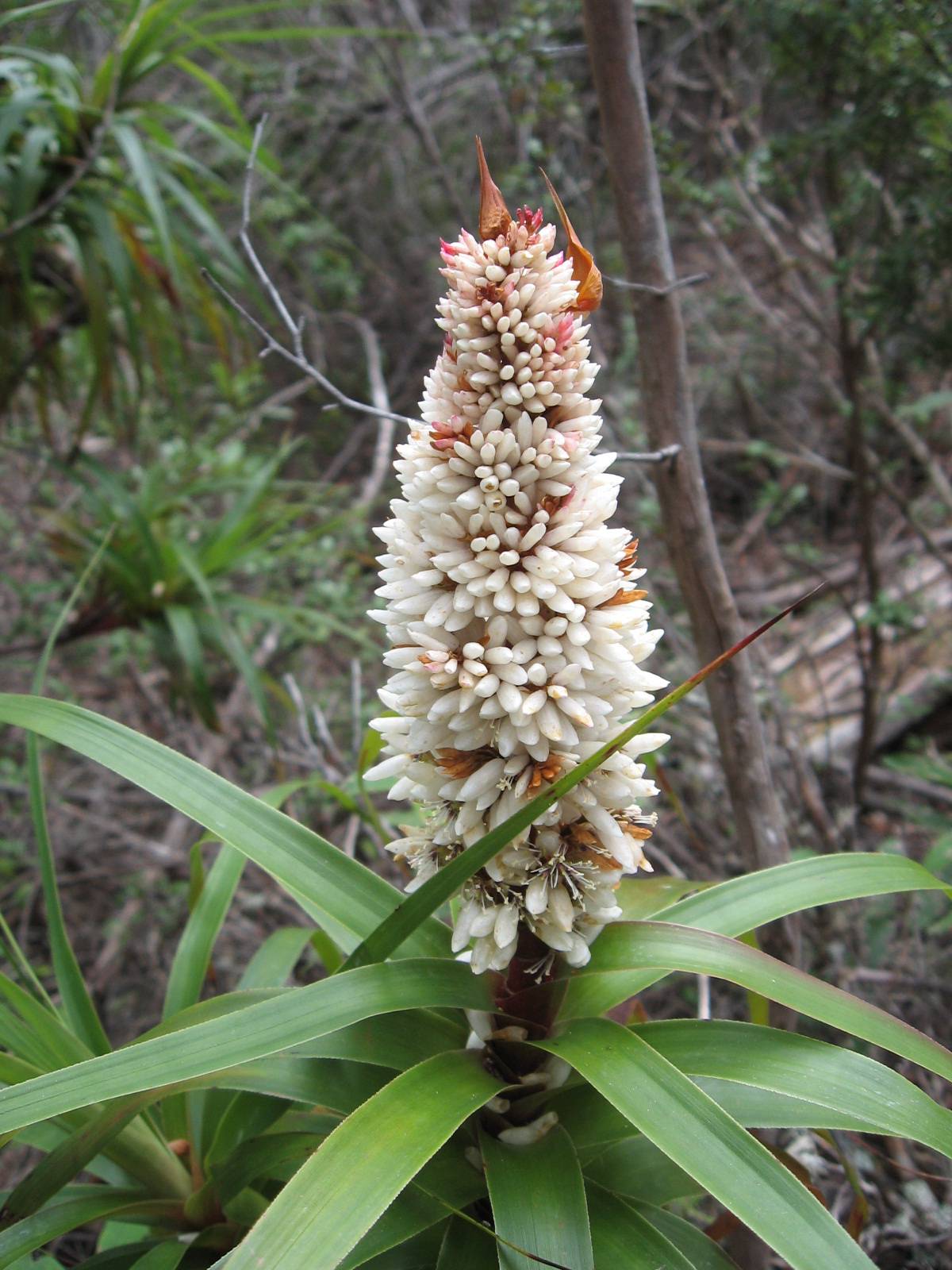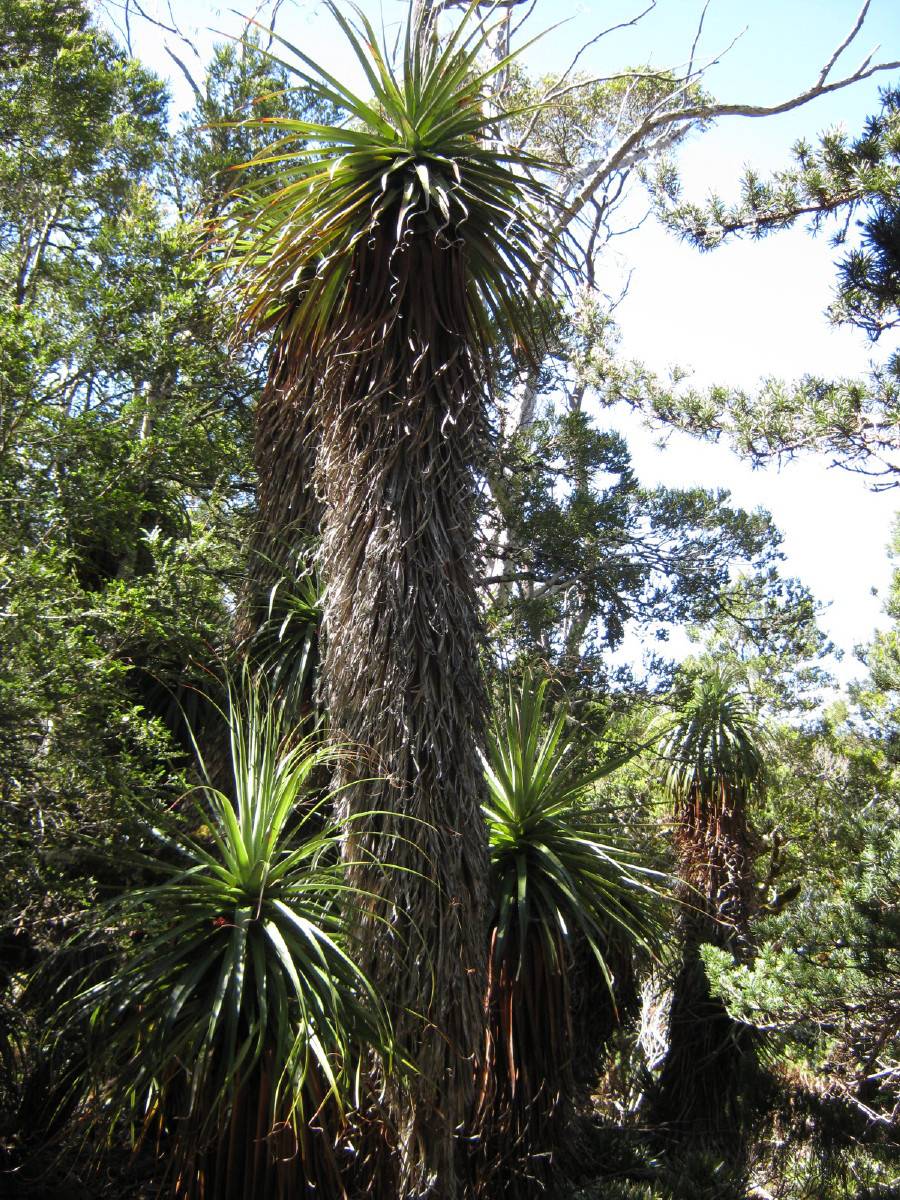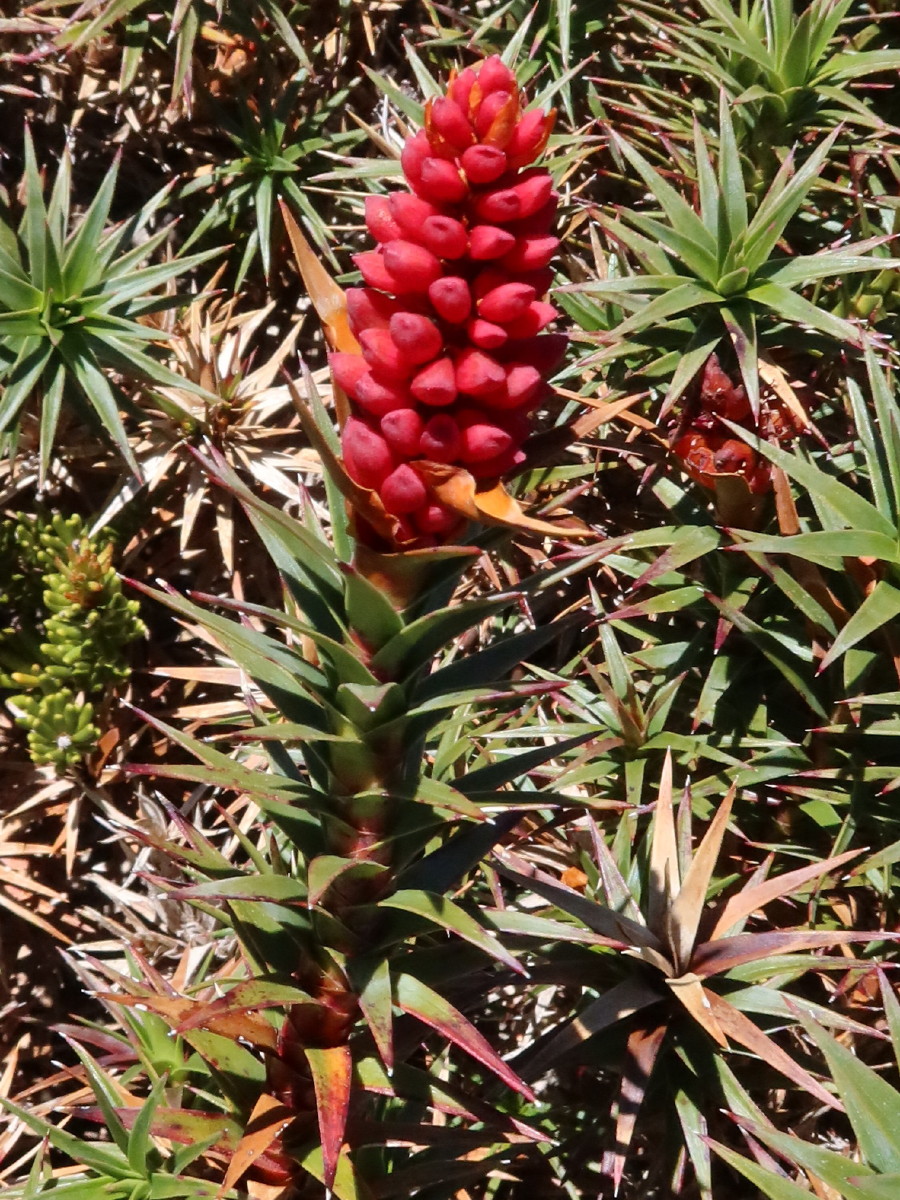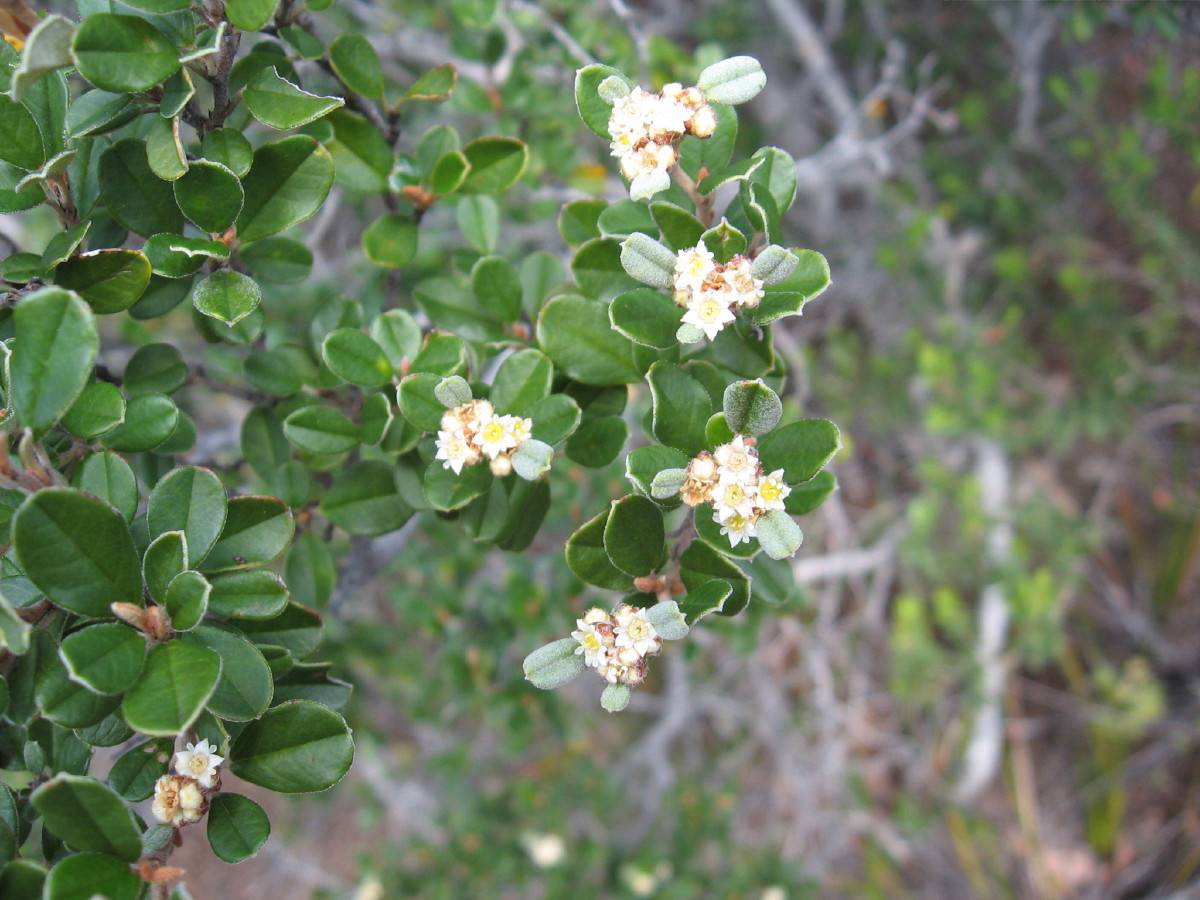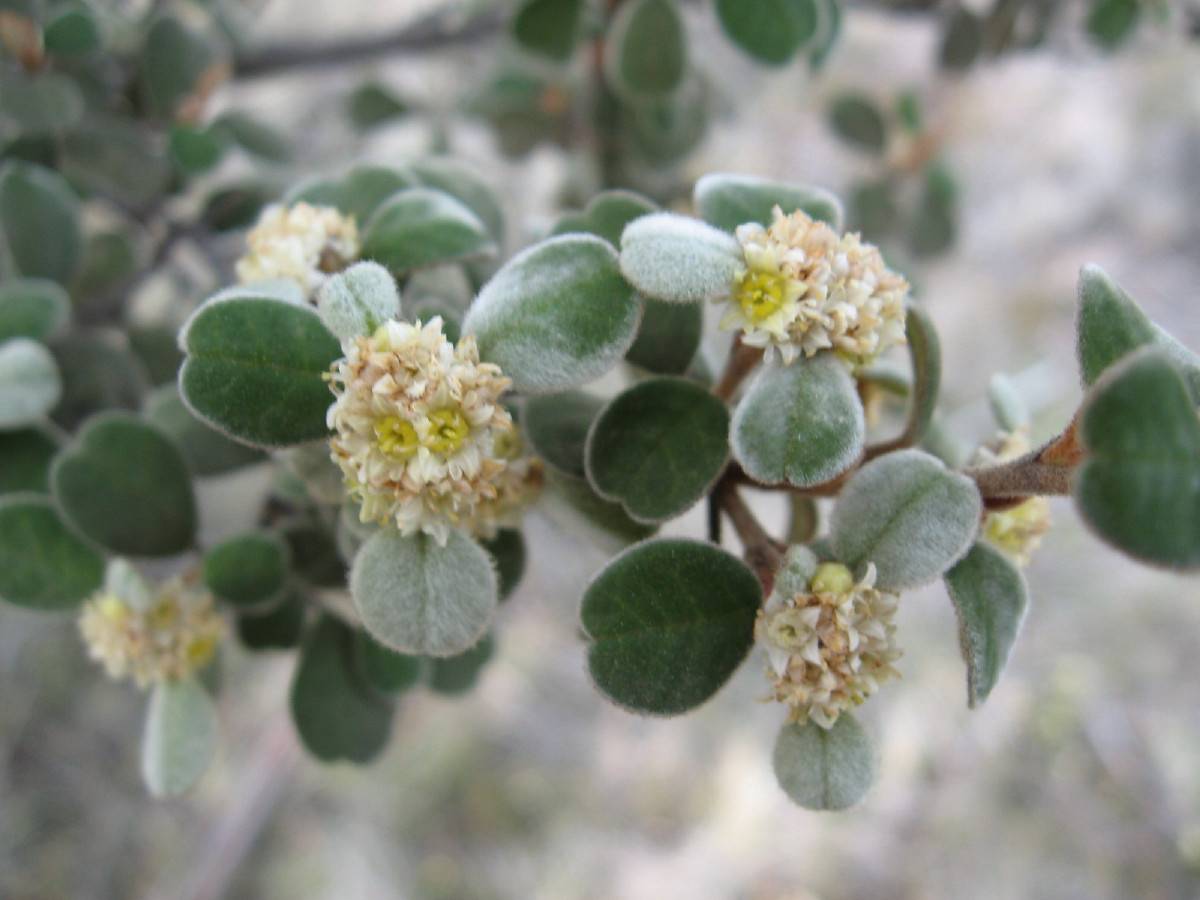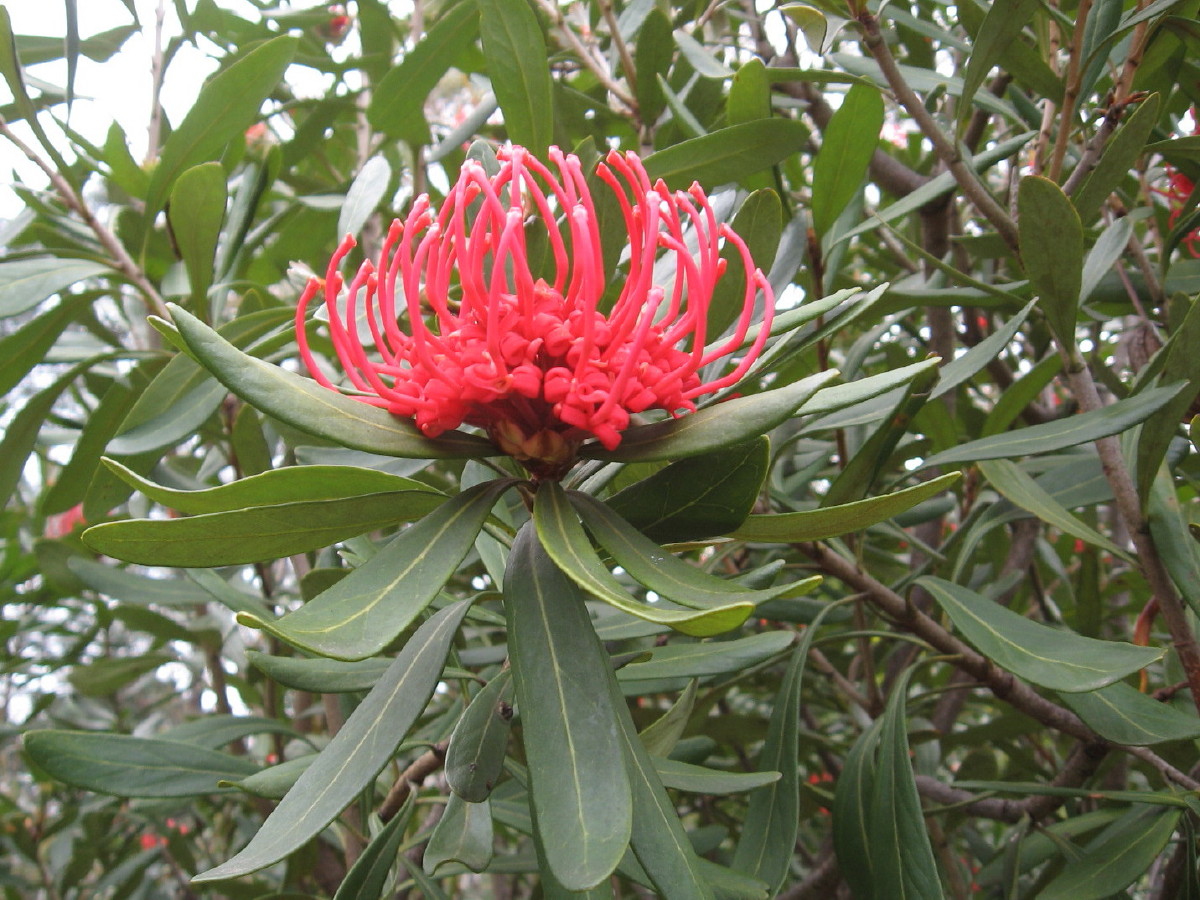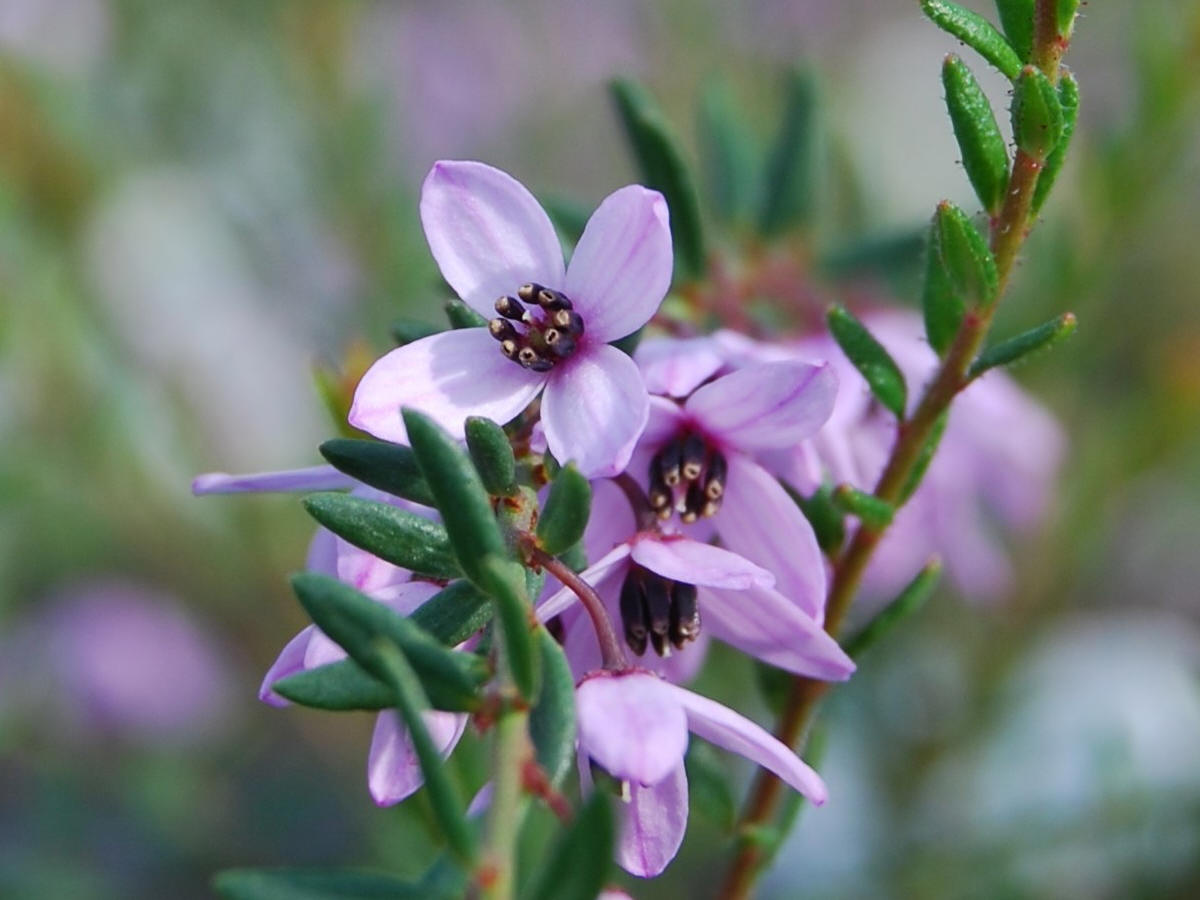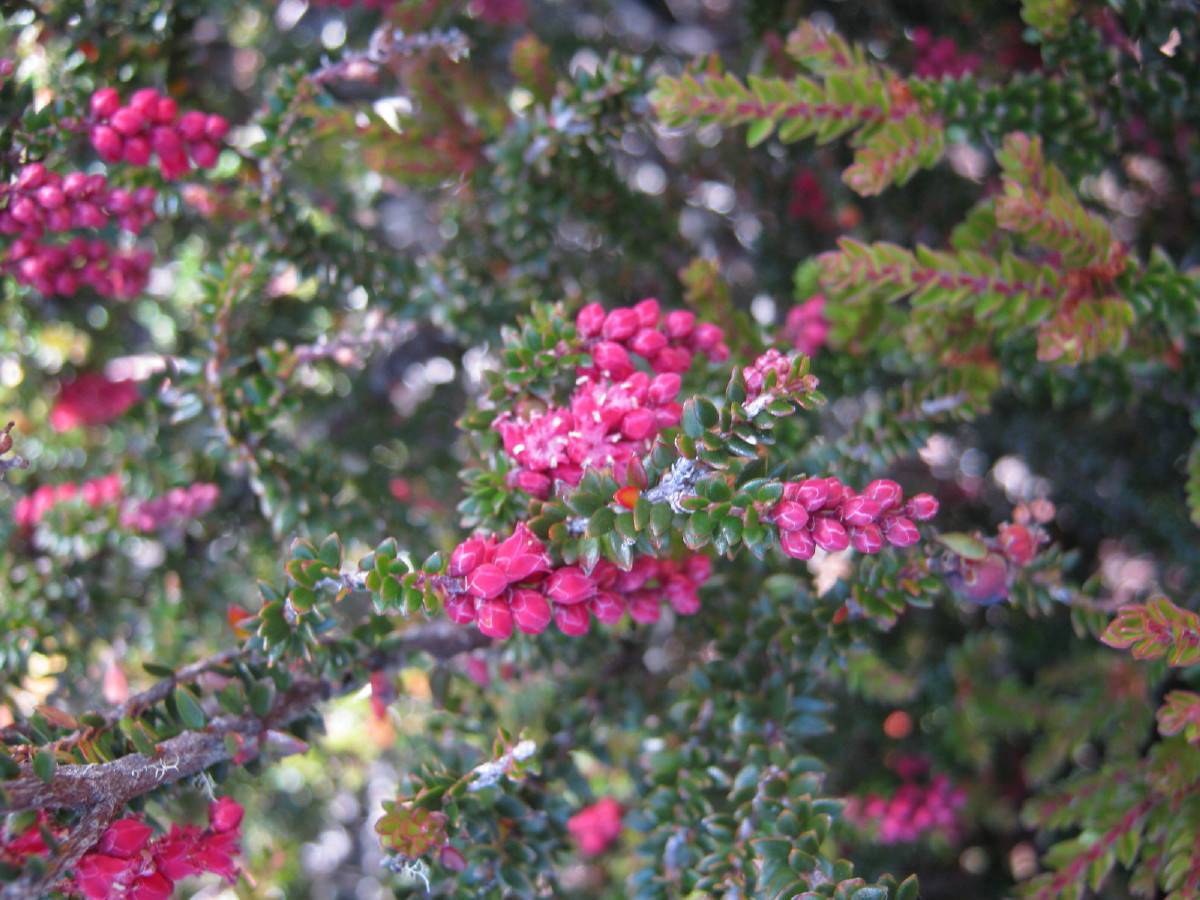Endemic flora Q-T
Viewing the meaning of botanical words To view the meaning of botanical words, hold the cursor on the blue word and the meaning will appear in a text box.
Based on Debenham C’s, The Language of Botany, A Publication of The Society for Growing Australian Plants, Chipping Norton NSW, c.1962.
Richea dracophylla
Botanical Name: Richea dracophylla (E)
Commonly Called: Pineapple candleheath
Botanical Family: Epacridaceae
Grows: 1.5-5m H x 1-1.5m W
Foliage: Leaves taper to a thin point, 15 to 30cm long, sheathing the stem, usually along the ends of the stems above the brown scar-rings of leaves that have dropped.
Flora: Flowers similar to rice grains, cream to white in terminal spikes. As the buds mature, the bracts fall, as does the cap formed by fused petals, revealing the stamens.
Flowering Season: Winter/spring
Fruiting body: Fruit is a hard brown capsule full of lots of seed.
How and where it grows: Widespread in mountain forests in the south-east.
Where found: Wellington Park; Hartz, Mt Field, Tasman National Parks; Snug Tiers; Bruny and Maria Islands
Other notes: This woody, upright many branched shrub is one of the easiest Richea species to grow and may self seed in moist mulch. Grows best in part shade, with moist well-drained soil. May be propagated from young stem tip cuttings or fresh seed. The branching stems with arching medium length leaves and tall white terminal flower spikes are the distinguishing features for this species.
Richea pandanifolia subsp. pandanifolia
Botanical Name: Richea pandanifolia subsp. pandanifolia (E)
Commonly Called: Pandani
Botanical Family: Epacridaceae
Grows: 2-12m H x 1-3m W
Foliage: This species is the tallest heath in the world with a single erect trunk, rarely branching. The leaves are 1 to 2 m long, strap like, arching, leathery, pointed at the tip, 3.5cm broad and sheathing around the trunk. The foliage dies off as the plant grows but continues to remain on the trunk acting like a skirt with the tips curling.
Flora: The white to pink flower spikes, with petals fused to create a cap, mature to deep pink, then shed the cap to expose the stamens. The flowers appear in the upper leaf axils.
Flowering Season: Spring/summer
Fruiting body: The fruit is a capsule.
How and where it grows: Subalpine to alpine to 1,200m. Open moist slopes and along creeks. Tends to grow in conspicuous stands, rarely alone. Also in rainforest where it tends to be individual plants.
Where found: Hartz, Pandani Walk Mt Field, Cradle Mountain – Lake St Clair National Parks; Hartz Track Kermandie
Other notes: This slow growing species does best in well drained moist and acid soil in part sun. It may be grown in a container. It can be propagated from fresh seed, but can be difficult to germinate. The other subspecies, R. pandanifolia subsp. ramulosa, Branching pandani, which grows along river and stream banks in Tasmanian’s south-west is a small tree up to 4m high, or a slender shrub, with branches. Most of its leaves drop off its trunk and it flowers in early summer.
Richea scoparia
Botanical Name: Richea scoparia (E)
Commonly Called: Scoparia
Botanical Family: Epacridaceae
Grows: 0.5-3m H x 1-2m W
Foliage: The leaves, which taper to a point, are rigid and green, 2 to 4cm long and overlap around the stem. The dead old leaves are retained on the stems.
Flora: Flowers may be white, cream, yellow, or pink to red terminal spikes with the fused petals forming a cap which is shed to expose the stamens. The bracts at the base of the flowers are shorter than the cap and fall off before the flowers shed their caps.
Flowering Season: This species may be seen in flower throughout summer
Fruiting body: The maturing flower’s ovary becomes a capsule with retained stigma and stamens.
How and where it grows: Widespread and conspicuous in subalpine and alpine areas.
Where found: Hartz Mountain, Mount Field, Tasman, Cradle Mountain Lake St Clair National Parks; Projection Bluff, Western Tiers; Skullbones Plains, Tasmanian Land Conservancy Reserve; Wellington Park and many other high altitude Reserves and locations.
Other notes: This compact, much branched, woody shrub, the bane of Bushwalkers due to its prickly foliage which has perforated many a japara or GORE-TEX coat, is readily recognised also by its spectacular flowering in so many beautiful colours. It requires moist, well-drained soil in part/full sun and summer watering. It may be propagated from tip cuttings given time, or from fresh seed.
Spyridium obovatum var. obovatum
Botanical Name: Spyridium obovatum var. obovatum (E)
Commonly Called: Smooth dustymiller
Botanical Family: Rhamnaceae
Grows: 1-15m H x 0.5-3m W
Foliage: The leaves have shiny upper surfaces with a prominent central vein on their upper surfaces and conspicuous veins and densely hairy lower surfaces. These leaves are obovate to elliptical and the tips are slightly recurved.
Flora: The flowers are cream in 4 to 5cm wide compact heads arising from the leaf axils and brown bracts around each floret. They usually have a single, elliptical and densely hairy, notch tipped, floral leaf.
Flowering Season: Spring
Fruiting body: The fruit of this species are capsules with the ovary covered by a thick disc.
How and where it grows: Rocky areas of south east including Freycinet and Tasman National Parks (NP).
Where found:; Schouten Island and other places in Freycinet NP; Douglas Apsley NP; Capes Hauy, Cape Pillar, Cape Raul and Salters Point Tracks, Macgregor Peak and several other places in Tasman NP; Paradise Gorge and Griffiths Rivulet Orford Area; Brown Mountain, Runnymede.
; Garden Island Creek, Clennett Hills.
Other notes: Difficult to propagate, so not widely grown, grow in well-drained, full sun sites. The leaves with shiny upper surface and cream flowers with notch tipped, elliptical, floral leaves are distinguishing features.
Spyridium obovatum var. velutinum
Botanical Name: Spyridium obovatum var. velutinum (E)
Commonly Called: Velvet dustymiller
Botanical Family: Rhamnaceae
Grows: 1-15m H x 0.5-3m W
Foliage: The leaves have intensely hairy upper surfaces and prominent central veins on their upper surfaces and conspicuous veins and densely hairy lower surfaces. These leaves are obovate to elliptical and the tips are slightly recurved.
Flora: The flowers are pale yellow. They are 4 to 5cm wide in compact heads arising from the leaf axils and have brown bracts around each floret. They usually have a single, elliptical and densely hairy, notch tipped, floral leaf.
Flowering Season: Spring
Fruiting body: The fruit of this species are capsules with the ovary covered by a thick disc.
How and where it grows: Dry rocky areas of east coast, Flinders and Maria Islands.
Where found: Gunners Quoin, Meehan Range Reserve; Quoin Mountain, Kepton; Shipstern Bluff Track, Tasman National Park; Middle Hill and Perpendicular Mountain, Maria Island; Brown Mountain; Tobys Hill, Huon Valley; Snug Falls Road, Snug. Several other places in Tasmania’s south-east.
Other notes: Difficult to propagate, so not widely grown, grow in well-drained full sun sites. The leaves with densely hairy upper surface and the pale yellow flowers with notch tipped, elliptical, floral leaves are distinguishing features.
Spyridium ulicinum
Botanical Name: Spyridium ulicinum (E)
Commonly Called: Scented dustmiller
Botanical Family: Rhamnaceae
Grows: 1-3m H x 0.5-1m W
Foliage: The upper surface of the leaves is shiny and dark green and the edges are rolled under while the under surface is hairy. They are very variable 1 to 2cm long and usually linear.
Flora: The aromtic, cream/white flowers are solitary or in clusters of three. They are about 8mm in diameter with brown bracts at the back and grow in the leaf axils of short side branchlets.
Flowering Season: Spring
Fruit: The fruit of this species is a capsule.
How and where it grows: Widespread but localised from sea-level to 1,200m in the south and south-east.
Where found: Snug Tiers; Wellington Park; Neika; Kettering; Confluence of the Broad and Derwent Rivers; Macquarie River;
Other notes: This erect, soft, much branched shrub is distinguished by the brown bracts around the usually solitary cream/white star flowers and the fine foliage.
Telopea truncata
Botanical Name: Telopea truncata (E)
Commonly Called: Tasmanian waratah
Botanical Family: Proteaceae
Grows: 3-4m H x 1-2m W
Foliage: The leaves of this species are typically 5 to 15cm long, green and leathery, with slightly recurved edges and variable in shape, lanceolate with round to pointed tips.
Flora: The clusters of 15 to 20 red, rarely orange through to yellow, flowers cluster on the tip of stems in a tight bunch then open to spread to 8cm diameter.
Flowering Season: Mid/late spring
Fruit: The fruit are brown, curved, leathery follicles which dry and split down one side, hinge on the other side and open to expose many seeds, which have delicate dark brown wings, nestled in the two halves of the follicles.
How and where it grows: Moist elevated forests and shrubberies 600-1,200m, in the west, south and Central Highlands.
Where found: Wellington Park above the Springs; Cradle Mountain Lake St Claire, Gordon Franklin Wild Rivers, Hartz and Mount Field National Parks; Mt Read; and many other highland places.
Other notes: This species readily responds to hard pruning, and bush fires after which it can often produce a cluster of new shoots at ground level. It can be hard to recognise until the bright red flowers appear in mid to late Spring. Grows best in moist, well-drained, coarse grained, well mulched soils. Prefers full sun or light shade. Grows easily from fresh seed without treatment, but can be difficult to propagate from cuttings, making it hard to propagate the rare flower colours.
Tetratheca gunnii
Botanical Name: Tetratheca gunnii (E)
Commonly Called: Shy pinkbells
Botanical Family: Elaeocarpaceae (used to be Tremandraceae)
Grows: This small, slender shrub is possibly rhizomatous due to many weak stems eminating from the base of the plant. It grows 10 to 30cm high by 10 to 30cm wide.
Foliage: Some stems from the base grow more or less upright while others are drooping with floppy upright tips. The stems are terete or slightly ridged and covered with minute white tubercles, some having minute white hairs, others have up to about 1.5mm long, gland tipped hairs. The usually alternate, occasionally almost opposite, almost erect or almost spreading, 2 to 6mm long by 0.5 by 1.5mm, grey leaves grow sparsely along the stems. The edges of the leaves are rolled under almost to the midrib so that the leaf underside is nearly invisible.
Flora: The small, pale mauve to deep pink, rarely white, four petalled flowers have a black centre without an anther tube. They grow solo, or rarely in pairs, in the leaf axils forming leafy racemes toward the tips of the stems. The deciduous petals, 3.5 to 4.5mm long, are elliptical to obovate and sometimes ovate.
Flowering Season: The flowers are seen in spring.
Fruit: The fruit of this species are compressed capsules with a few gland-tipped hairs.
How and where it grows: This threatened and rare species is restricted to the Dazzler Range in the north of Tasmania in serpentine soils.
Where found: Andersons Creek Reserve, Off Holwell Road, Dans Hill and north of Scotts Hill in the Dazzler Range Beaconsfield.
Other notes: An inconspicuous, straggly and soft small plant which is, unfortunately, susceptible to Phytophthora cinnamomi root rot fungus. Propagation techniques have been developed by the Royal Tasmanian Botanical Gardens conservation collection personnel.
Trochocarpa thymifolia
Botanical Name: Trochocarpa thymifolia (E)
Commonly Called: Fragrant purpleberry
Botanical Family: Epacridaceae
Grows: 0.5-1.5m H x 1-2m W
Foliage: The small, ovate, dark green leaves with recurved tips are between 2 and 4mm long and crowded along the stems.
Flora: The spikes of tubular, pink to white flowers hang from near and to the ends of the branches and branchlets.
Flowering Season: Summer
Fruit: The fruit of this species are mauve, maturing to purple, spherical, berry like succulent fruit that don’t open at maturity to reveal a stone with usually one seed within. When fully ripe, they fall off and disintegrate on/in the leaf litter until the stone splits and the seed germinates.
How and where it grows: Widespread in wet subalpine forests, sometimes in more exposed sites among boulders.
Where found:Ben Lomond, Cradle Mountain Lake St Clair, Mount Field and Tasman National Parks; the Central Highlands; and Wellington Park, among other moist, high altitude, typically above 800m, locations.
Other notes: This beautiful, colourful, compact, woody shrub with red new growth, small leaves, tiny grape like bunches of flowers followed by pretty purple fruit is usually found with its many branches sprawled around boulders. It may be propagated from seed of more readily from cuttings and requires moist, mulched, well-drained soil in part shade.
-
- Acacia axillaris
- Acacia derwentiana
- Acacia pataczekii
- Acacia riceana
- Agastachys odorata
- Allocasuarina monilifera
- Anodopetalum biglandulosum
- Anopterus glandulosus
- Aristotelia peduncularis
- Asterotrichion discolor
- Athrotaxis cupressoides
- Athrotaxis selaginoides
- Bedfordia salicina
- Bellendena montana
- Billardiera longiflora
- Blandfordia punicea
- Boronia citriodora
- Boronia gunnii
- Callitris oblonga
- Cenarrhenes nitida
- Correa lawrenceana
- Craspedia glauca
- Cyathodes glauca
- Diselma archeri
- Dodonea filiformis
- Epacris acuminata
- Epacris virgata
- Eucalyptus Altitude Progression
- Eucalyptus coccifera
- Eucalyptus cordata
- Eucalyptus johnstonii
- Eucalyptus pulchella
- Eucalyptus risdonii
- Eucalyptus subcrenulata
- Eucalyptus tasmaniensis, syn. E. delegatensis subsp. tasmaniensis
- Eucalyptus tenuiramis
- Eucalyptus urnigera
- Eucryphia lucida
- Hakea epiglottis
- Hovea tasmanica
- Isophysis tasmanica
- Lasiopetalum micranthum
- Lagarostrobos franklinii
- Leptecophylla parvifolia
- Leptospermum grandiflorum
- Leptospermum nitidum
- Leptospermum rupestre
- Lomatia polymorpha
- Lomatia tasmanica
- Lomatia tinctoria
- Melaleuca pustulata
- Melaleuca virens
- Milligania densiflora
- Nothofagus gunnii
- Odixia achlaena
- Olearia archeri
- Orites acicularis
- Orites diversifolius
- Orites revolutus
- Ozothamnus scutellifolius
- Pentachondra involucrata
- Persoonia gunnii
- Phebalium daviesii
- Phyllocladus aspleniifolius
- Pimelea nivea
- Pimelea sericea
- Pomaderris pilifera subsp. talpicutica
- Prionotes cerinthoides
- Richea dracophylla
- Richea pandanifolia
- Richea scoparia
- Spyridium obovatum var. obovatum
- Spyridium obovatum var. velutinum
- Spyridium ulicinum
- Telopea truncata
- Tetratheca gunnii on hold until photos approved
- Trochocarpa thymifolia
- Veronica formosa
- Westringia angustifolia
- Westringia brevifolia
- Westringia rubiifolia
- Alpine yellow gum
- Arching wattle
- Autumn teatree
- Beaked needlebush
- Billy buttons
- Button-leaf everlastingbush
- Bushmans bootlace
- Celerytop pine
- Central lemon boronia
- Christmas bells
- Claspleaf heath
- Climbing heath
- Common speedwell bush
- Davies waxflower
- Deciduous beech
- Derwent wattle
- Dwarf pine
- Dwarf leatherwood
- Eucalyptus Altitude Progression
- Fineleaf hopbush
- Forest frillyheath
- Fragrant candlebush
- Golden everlastingbush
- Guitar plant
- Gumtopped stringybark
- Horizontal
- Heartberry
- Heartleaf gum
- Huon pine
- King Billy pine
- Kings lomatia
- Lanceleaf daisybush
- Leatherwood
- Midland wattle
- Moleskin dogwood
- Mountain correa
- Mountain geebung
- Mountain guitarplant
- Mountain pinkberry
- Mountain riceflower
- Mountain rocket
- Mountain teatree
- Narrowleaf westringia
- Native Plum
- Necklace sheoak
- Pandani
- Pencil pine
- Pineapple candleheath
- Pretty heath
- Prickly bottlebrush
- Purple appleberry
- Purple cheeseberry
- Revolute orites
- Risdon peppermint
- River boronia
- Rockfield purplepea
- Roundstem Tasmanian silver gum
- Scented dustmiller
- Scoparia
- Shiny teatree
- Shortleaf westringia
- Shy pinkbells on hold until photos approved
- Silky milligania
- Silver peppermint
- Smooth dustymiller
- Snow peppermint
- South Esk pine
- Squarestem Tasmanian silver gum
- Sticky westringia
- Tasmanian blanket leaf
- Tasmanian currajong
- Tasmanian laurel
- Tasmanian purplestar
- Tasmanian velvetbush
- Tasmanian waratah
- Thymeleaf purpleberry
- Urn Gum
- Variable orites
- Velvet dustymiller
- Wallys wattle
- Warty paperbark
- White peppermint
- Yellow gum
- Yellow orites
